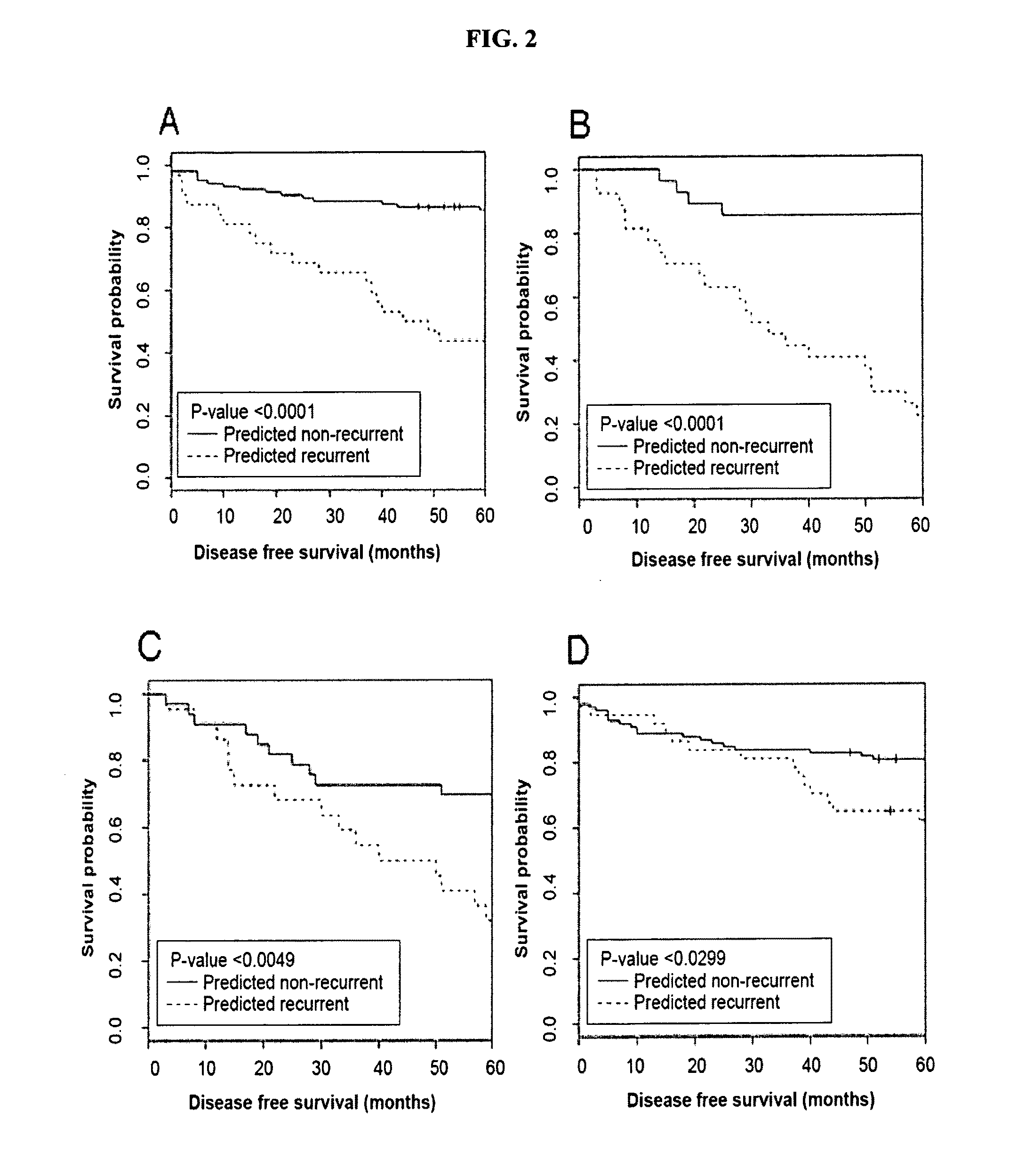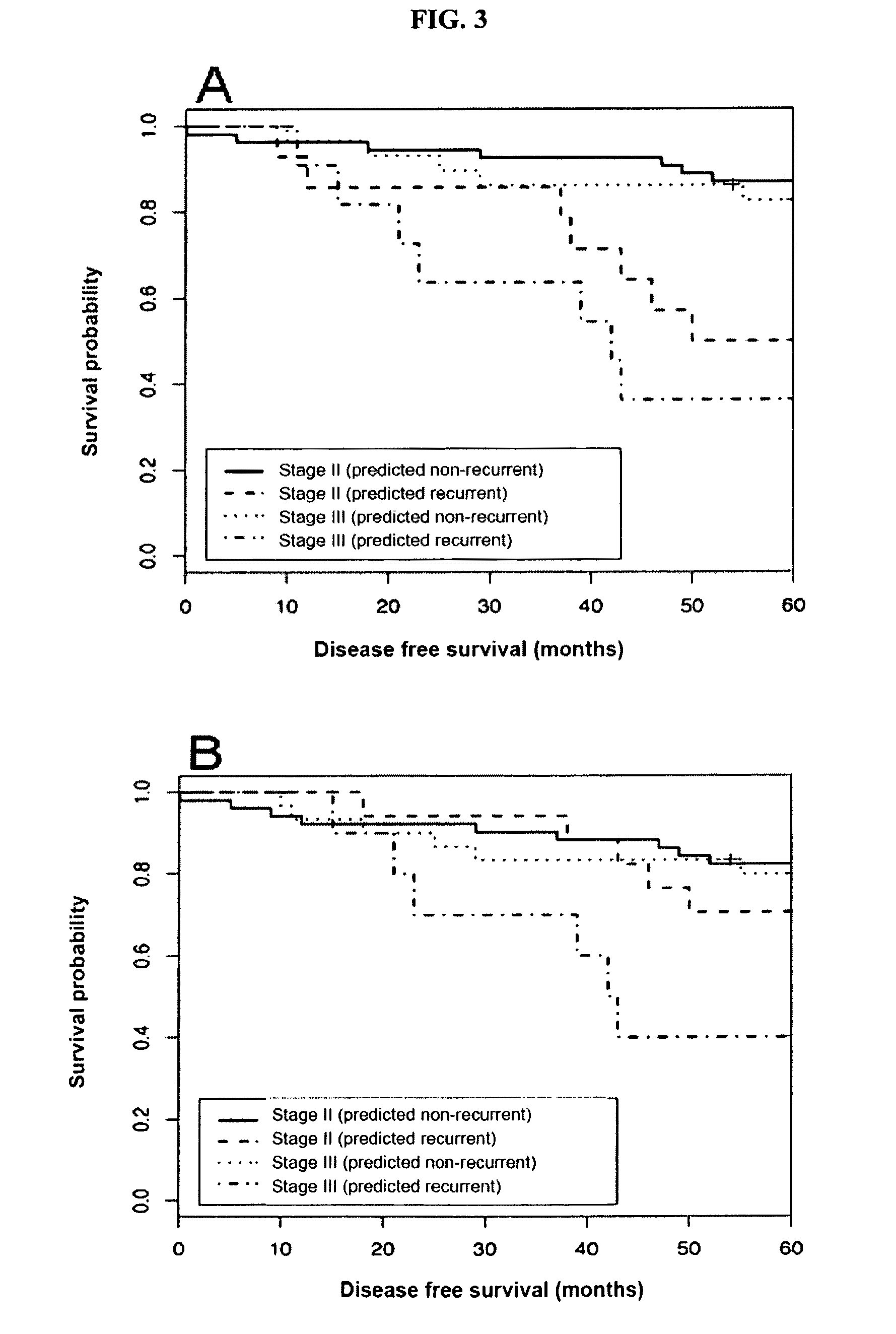Prognosis prediction for colorectal cancer
a colorectal cancer and prognosis prediction technology, applied in the field of colorectal cancer prognosis prediction, can solve the problems of inability to accurately predict the outcome of individual patients, affecting the accuracy of individual tests, and focusing on single proteins or gene mutations with limited success in terms of prognostic information, etc., to achieve effective individual tests and enhance the accuracy of prediction
- Summary
- Abstract
- Description
- Claims
- Application Information
AI Technical Summary
Benefits of technology
Problems solved by technology
Method used
Image
Examples
example 1
Patients and Methods
[0137]Two cohorts of patients were included in this study, one set from New Zealand (NZ) and the second from Germany (DE). The NZ patients were part of a prospective cohort study that included all disease stages, whereas the DE samples were selected from a tumour bank. Clinical information is shown in Table 6, while FIG. 1 summarises the experimental design.
example 2
Tumour Samples
[0138]Primary colorectal tumor samples from 149 NZ patients were obtained from patients undergoing surgery at Dunedin Hospital and Auckland Hospital between 1995-2000. Tumor samples were snap frozen in liquid nitrogen. All surgical specimens were reviewed by a single pathologist (H-S Y) and were estimated to contain an average of 85% tumor cells. Among the 149 CRC patients, 12 had metastatic disease at presentation, 35 developed recurrent disease, and 102 were disease-free after a minimum of 5-year follow up.
[0139]Primary colorectal tumor samples from DE patients were obtained from patients undergoing surgery at the Surgical Department of the Technical University of Munich between 1995-2001. A group of 55 colorectal carcinoma samples was selected from banked tumours which had been obtained fresh from surgery, snap frozen in liquid nitrogen. The samples were obtained from 11 patients with stage I cancer and 44 patients with stage II cancer. Twenty nine patients were rec...
example 3
RNA Extraction and Target Labeling
[0141]NZ tumours: Tumours were homogenized and RNA was extracted using Tri-Reagent (Progenz, Auckland, New Zealand). The RNA was then further purified using RNeasy mini column (Qiagen, Victoria, Australia). Ten micrograms of RNA was labelled with Cy5 dUTP using the indirect amino-allyl cDNA labelling protocol.
[0142]A reference RNA from 12 different cell lines was labelled with Cy3 dUTP. The fluorescently labelled cDNA were purified using a QiaQuick PCR purification kit (Qiagen, Victoria, Australia) according to the manufacturer's protocol.
[0143]DE tumours: Tumours were homogenized and RNA was isolated using RNeasy Mini Kit (Qiagen, Hilden, Germany). cRNA preparation was performed as described previously (9), purified on RNeasy Columns (Qiagen, Hilden, Germany), and eluted in 55 μl of water. Fifteen micrograms of cRNA was fragmented for 35 minutes at 95° C. and double stranded cDNA was synthesized with a oligo-dT-T7 primer (Eurogentec, Koln, Germany)...
PUM
 Login to View More
Login to View More Abstract
Description
Claims
Application Information
 Login to View More
Login to View More - R&D
- Intellectual Property
- Life Sciences
- Materials
- Tech Scout
- Unparalleled Data Quality
- Higher Quality Content
- 60% Fewer Hallucinations
Browse by: Latest US Patents, China's latest patents, Technical Efficacy Thesaurus, Application Domain, Technology Topic, Popular Technical Reports.
© 2025 PatSnap. All rights reserved.Legal|Privacy policy|Modern Slavery Act Transparency Statement|Sitemap|About US| Contact US: help@patsnap.com



